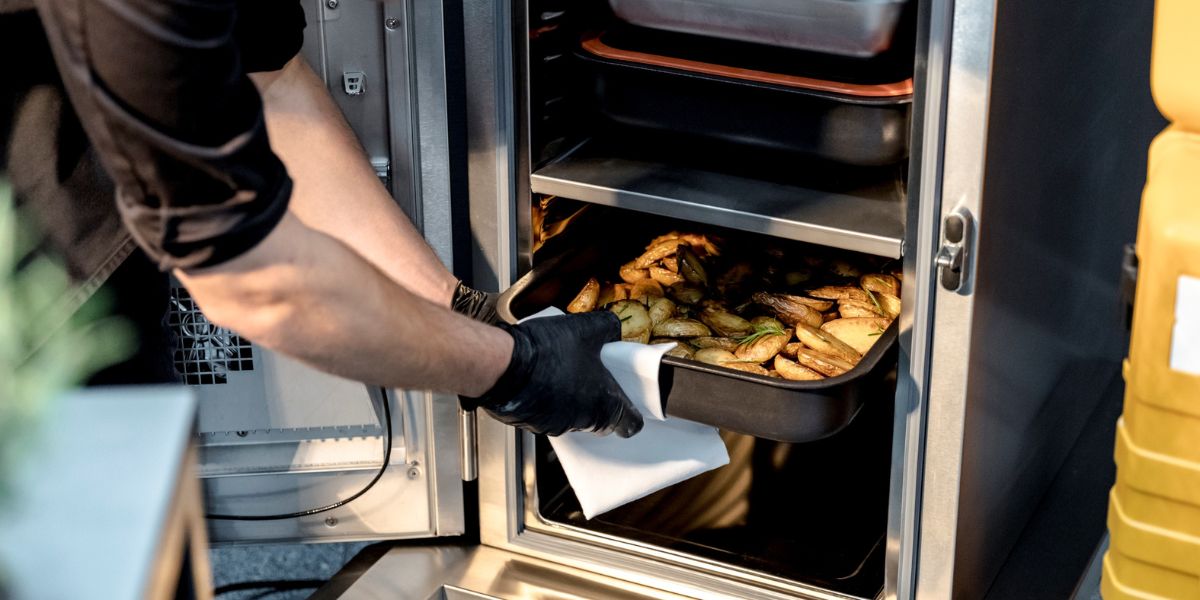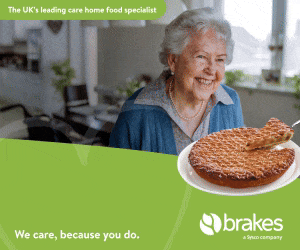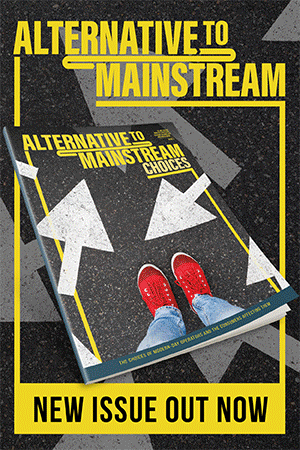Feature: The heat is on
An oven is the lynchpin of every kitchen – without one there would be precious little in the way of hot food. But how can care caterers successfully navigate their way through the plethora of different options on offer?

We all agree that an oven is a vital part of any kitchen, be it domestic or commercial, but as the one we select will have to do everything we ask of it and continue to do so for a long time, it’s important to make the right purchasing decision. This is especially essential for care caterers, as food plays such a big part in keeping care home residents happy and healthy.
So, where do they start?
As with all purchasing decisions the most important criterion is the budget, but once that has been decided what is the next step?
MAKE AN ASSESSMENT
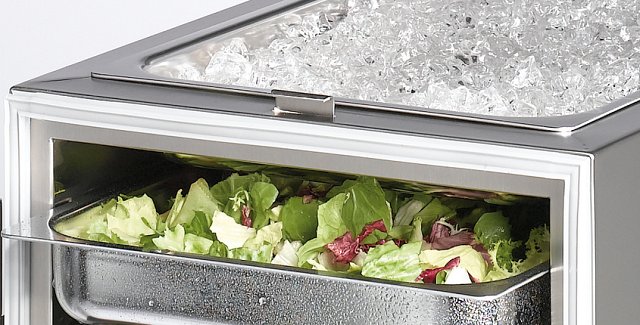
According to Jon Walker, joint managing director at BGL Rieber, would-be purchasers should make a careful assessment of their needs before even thinking about any purchase. He advises: “Care caterers should initially consider the pros and cons of the alternative cooking methods and decide which would suit them and their particular circumstances best.” He explains that in some instances other oven products may be more suitable for some care homes. For example, he suggests that pressure steamer ovens are more energy- and cost-efficient per kilo of food cooked or regenerated than conventional ovens or combis. He adds that when they are paired with convection ovens for roasting this can prove to be a more reliable and cost effective equipment package than using a combination oven.
Walker adds that steamers offer an excellent way of cooking food quickly, while also retaining the texture, nutrients and colour of the food. He says: “They used to be a mainstay in care home kitchens, but they have gradually been replaced by combis, which also steam, but the cooking takes longer and uses more energy.” Walker also recommends the efficacy of hybrid ovens that combine several cooking processes in one appliance and advises that Rieber sells a hybrid oven that is a conventional oven that cooks at up to 200degC, but is also a regeneration oven with a core temperature probe, a slow cooker, a baking oven, and a hot cupboard too
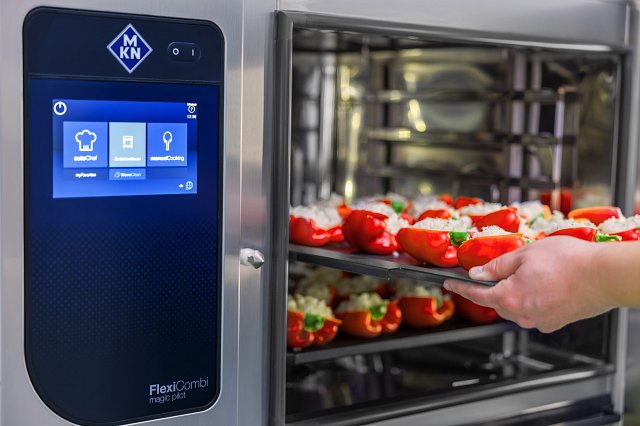 .
.
Michael Eyre, product director at Jestic Foodservices, believes that efficiency should be the primary concern when buying any new kitchen appliance. He says: “With the kit in catering kitchens being in constant use all day, every day and energy and food costs continuing to spiral, care caterers should be looking for equipment that is engineered to the highest standards and combines exceptional craftsmanship with the latest technologies to provide the performance, safety and efficiency required by anyone working within a commercial kitchen.”
He adds that manufacturers, including Jestic’s brand partners, are now all very focused on producing increasingly energy-efficient equipment that helps care caterers to keep bills down and reduce energy usage overall. He explains that manufacturers such as MKN are now offering combi ovens that feature insulated, triple-glazed doors that ensure optimal efficiency, reduce heat radiation and make cleaning easier than ever.
Another MKN innovation is a specially developed flexible rack system that enables more products to be cooked in the same space. Eyre says: “With fewer batches, less water is required and there is less heat loss, which means lower energy costs and reduced CO2 emissions.”
Ultimately though, he advises care caterers to be aware that no one size fits all, in terms of equipment, style, menu choice or indeed, any other element of their business. Thus, it’s important that each operator works out precisely what they need before purchasing.
DURABILITY, CAPABILITY AND LONGEVITY
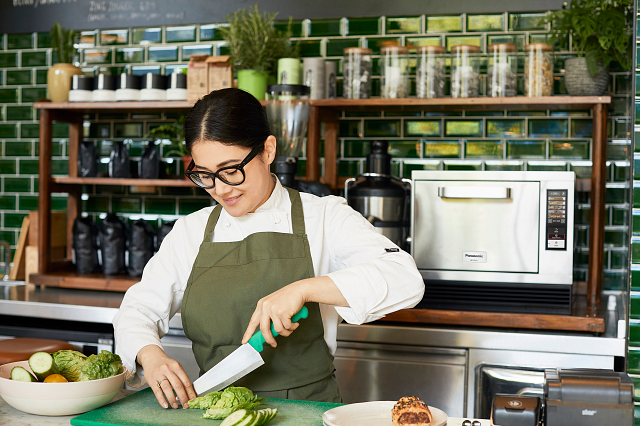
“When it comes to selecting new equipment, the primary consideration for care caterers should be durability and capability,” declares Andrew Whyte, product manager at Panasonic UK, who adds that these are two attributes that microwave ovens offer in spades. He continues: “Microwaves are a core piece of equipment in a busy commercial kitchen and as one of the most used appliances, they play a key role – offering great flexibility and efficiency and cooking quality food consistently.” Whyte’s contention is that having a product that is durable and reliable enough to be on and off up to 200 times a day, seven days a week is a must. He enthuses: “Following recent advances in new product development and technology, microwaves are now suited to much more than simply defrosting – they can successfully be used to help execute much more complex dishes too.”
Whyte goes on to say that microwaves also earn their keep in smaller kitchens where space is at a premium, as they can be safely placed without having too much of an impact on the kitchen preparation space. Furthermore, they can be neatly stacked on top of each other too. He adds that with the cost of energy at the highest it’s ever been, microwaves are energy- efficient machines that can help to reduce cooking costs.
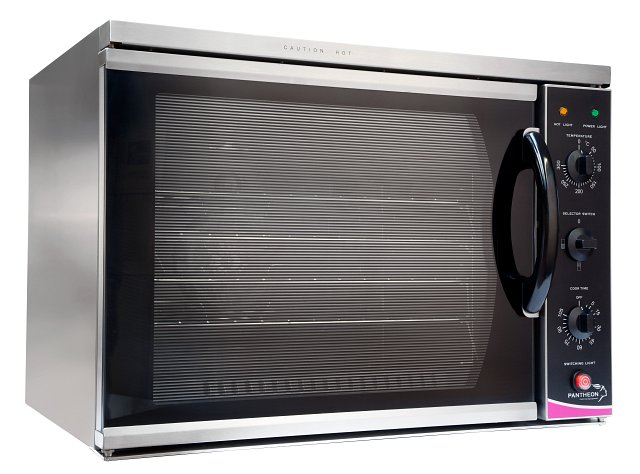
Nick Pendlebury, director of Pantheon Catering Equipment, offers care caterers a novel way to ensure they are selecting an appropriately sized oven. He says: “Ultimately, they’re looking for reliability, together with the capability to cope with the capacities and cooking demands of their operation. Thus, one good tip is to check how many gastronorm containers are needed at any one time and to ensure the oven can safely accommodate that amount.” He also advises that caterers should ensure that they have a suitable space in the kitchen to position the oven, as not doing so could result in having to retrospectively make inconvenient and sometimes costly changes to the kitchen layout.
When it comes to special features to look out for, Pendlebury suggests that when looking for a convection oven, caterers should check that it has a reliable fan system that ensures that all areas are heated equally, that it offers interior lighting so that contents can easily be monitored without opening the door, an accurate timer, and a double-glazed door to minimise heat loss. His final piece of advice is to only select the extra features that will be useful and to bear in mind that expensive doesn’t necessarily mean ‘best’.
MICROWAVES CAN BE MIGHTY
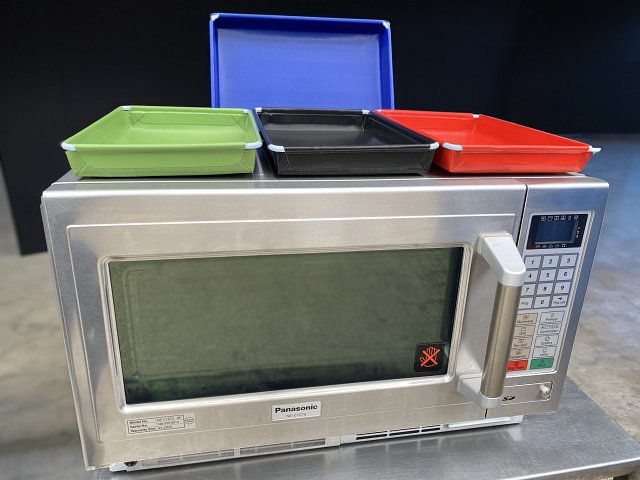
Iain Phillips, managing director of Regale, opines that each of the three main cooking ovens – convection, combi and microwave - can be considered useful pieces of kit to have within care home catering set-ups, but that each comes with its own set of advantages and disadvantages.
“He says: “Conventional ovens, for example, are best for use in high-quality cooking and have excellent browning and crisping capabilities, but they are slow and energy-heavy, whereas combi ovens, which incur a higher initial investment and staff training, are extremely versatile and precise - combining steam and convection for top-quality results.”
On the other hand, he observes that microwaves are fast, affordable, flexible and efficient for basic cooking and reheating, but are not suitable for use with every type of food. He adds that accelerated high-speed ovens, which offer the benefit of swiftness, adaptability and versatility, also have a smaller capacity and incur higher costs. “They are more suited to fast-paced environments that need quick service,” he says.
Phillips adds that it comes down to considering which equipment works best in individual catering environments. “For chefs operating within the care home sector, it’s about having kitchen equipment that can assist them in preparing, cooking and serving food safely and efficiently, but also about speeding up kitchen processes too.”
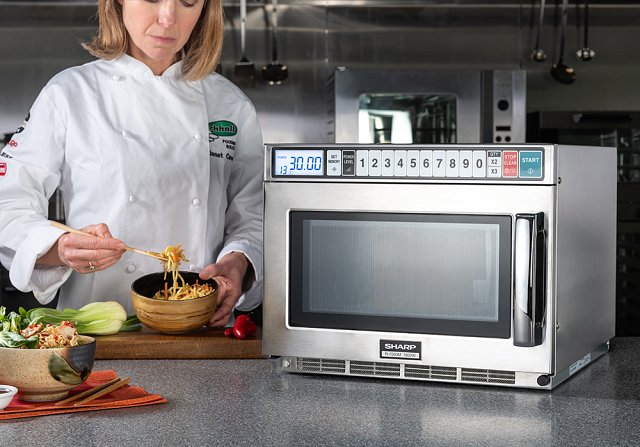
Duncan Vipas, head of sales at RH Hall, believes that when it comes to microwave ovens, their sustainability credentials are a big plus. He explains: “Sustainability is a key area of focus for operators and we are now seeing many looking at lifecycle costs.” Because microwaves don’t require any preheating and provide ‘on demand’ cooking, they operate from a 13-amp plug, making them supremely energy- efficient. Vipas maintains that although microwaves have traditionally been seen as a ‘throwaway appliance’, in line with a growing focus on sustainability throughout the foodservice industry it is more important than ever to choose equipment with a proven track record for reliability and longevity.
Vipas adds though, that it is important that care caterers select the microwave oven that will cater for their precise needs most effectively. He says: “If it is to be used mainly for simple reheating and defrosting of foods then a straight-forward commercial microwave will suffice. However, if it needs to both reheat and cook food products, a combination microwave oven is the best choice.” He adds that it’s also important to choose an oven with sufficient power, without being beguiled by a higher specification than is necessary. He observes: “While it is common for caterers to choose speed to ensure faster output times, it is also very important to understand that too much speed will destroy smaller portions of food or the more delicate and sugary types of product.”
His final piece of advice is to always choose from a commercial range of microwaves, as machines aimed at the domestic market simply aren’t built for the rigours of a professional kitchen.
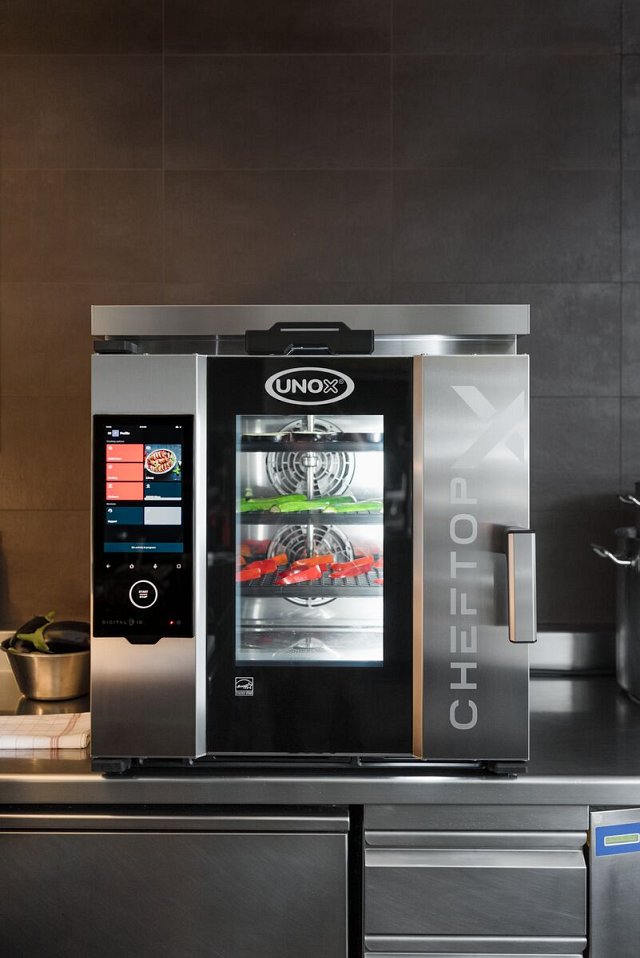
“As budgets and kitchen spaces get smaller across the foodservice industry, we’ve seen a real need for versatility,” says Scott Duncan, managing director of Unox UK. He agrees that there can be benefits to using one appliance and reports that care caterers are becoming increasingly interested in built-in technology. He reveals that a recent Unox innovation that facilitates air fry cooking inside a combi oven due to increased fan speed, has created a lot of interest. He explains: “This technology effectively moves fried products away from traditional fryers and the usual horizontal cook line - which takes up a huge amount of space and needs an additional canopy and extraction.” He adds that when the benefits of air frying, which include less risk to operators, less oil management, less cleaning, and a lower calorie count, are added together they provide a very compelling package.
He continues: “Offering care home caterers the ability to roast, steam, fry, braise, and more in one combi oven will be a huge game changer that will really help to enhance a care home’s menu and kitchen management all year round.”
Duncan advises that now is an ideal time for care home managers to evaluate the whole of their kitchen process, from looking at how chefs cook in combi ovens, to how they clean them. “They need to ask if there is a better way and also whether appliances both enhance and support the kitchen team,” he says. He predicts that decision makers will inevitably reach a fork in the road, because ultimately, the industry needs solutions to be smarter as the diameters of the kitchen space get smaller. He continues: “It’s becoming apparent that effective kitchen management is key, as is moving with the times and using the technological advances seen across other sectors.”
Duncan feels that the most covetable technological advances include Unox’s brand-new software that delivers effortless oven management, whether for an individual kitchen or an entire estate. At the touch of a button, management teams can see what time the ovens are switched on, how long they are in operation, what time they are cleaned, and how much water they use. He concludes: “Having this level of information at their fingertips will help care caterers to make the more informed decisions that will impact positively on their energy and water usage as well as their overall sustainability.”
CLEANING AND MAINTENANCE
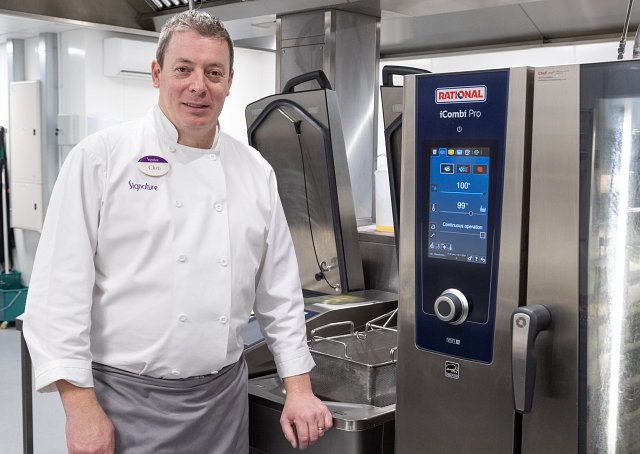
Of course, no oven will operate at optimal efficiency if it isn’t clean and according to manufacturer Rational, it’s essential that care caterers implement a stringent cleaning regime in order to maintain not just oven efficacy but also the highest hygiene and food safety standards. The company maintains that, in common with many other leading brands, Rational combi steamers come equipped with a self-cleaning function that can be programmed to run at specific intervals. This ensures regular cleaning, minimising the accumulation of grease and other contaminants that might compromise hygiene standards and lead to potentially costly breakdowns.
Rational goes on to warn that since compliance with legal requirements is essential to the operation and reputation of a care home, particularly when catering to vulnerable residents, it’s vital to ensure that any equipment’s cleaning features seamlessly align with the principles of Hazard Analysis Critical Control Points (HACCP). These are essential for identifying and managing potential food safety risks. Connected cooking systems also facilitate the documentation and tracking of HACCP-related data, thus simplifying the task of adhering to food safety regulations. HACCP data is automatically recorded and documented up to six months retroactively without any gaps.
Victoria Carroll, sales and marketing director at Hobart Service, agrees that cleaning and hygiene are non-negotiables within a care home environment, both in terms of the kitchen and communal foodservice areas. She observes: “Because it’s used day in, day out, catering equipment operates in some of the most demanding environments, while also being subject to food residue, grease and other contaminants that require regular and consistent cleaning.”
CONTACTS
BGL Rieber: bglrieber.co.uk
Hobart: hobartservice.co.uk
Jestic Foodservice: jestic.co.uk
Panasonic: panasonic.co.uk
Pantheon Catering Equipment: pantheonce.co.uk
Rational: rational-online.com
Regale: regale.co.uk
RH Hall: rhhall.com
Unox: unox.com


